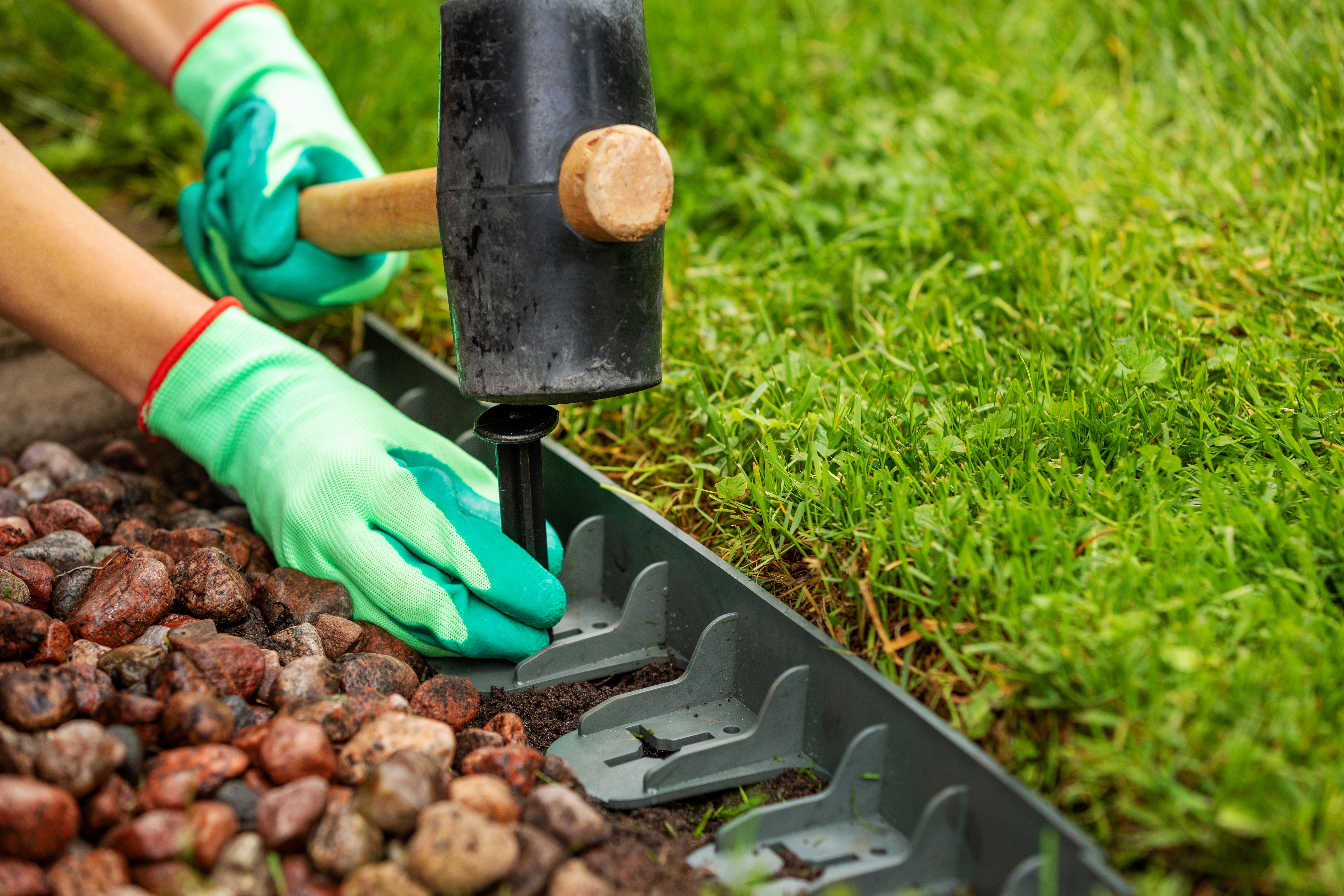
Landscaped gardens look beautiful. The reason they look so stunning is that they are perfectly trimmed to a neat finish. All properly landscaped gardens will have border edging to separate flowerbeds and planted areas from the rest of the space. Edging provides that clean-cut, clearly defined look that is synonymous with manicured gardens. However, there is more to this than meets the eye.
Whilst edging is secondary to flowers, shrubbery, and plant life, it plays an important role in garden layout and maintenance. Therefore, the type of garden edging to go in your lawn needs to be carefully thought out. Not only does it need to match the aesthetic of the space, but it also needs to be practical for the surrounding environment.
Plastic and metal lawn edging are the most popular types of garden borders, but how do you choose between them? Whether you have a beautiful artificial lawn recently laid by our team or you are due to get one installed, we have put together the following guide to help you find the right border for your garden.
Plastic Edging
There are several reasons why a person might choose plastic garden edging, though typically, people stick to metal edging. The main advantages of this are:
- It is the most affordable option.
- It is straightforward to install.
- It is not destructive or invasive to the existing surface.
- It is available in many different colours and ornamental designs.
As well as these benefits, there are some drawbacks to plastic border edging. Here are some of some of the things you need to bear in mind:
- It is not as strong as other types of edging.
- It may need to be replaced more frequently.
- It is not as suitable for hard ground.
- It can become brittle in the sun depending on UV stability.
For those on a budget or with soft ground in shaded areas, plastic edging can be a great option. However, it’s not suitable for everyone. In some instances, metal garden edging is the best solution.
Metal Edging
Where plastic edging isn’t suitable, you might need to consider steel edging. Some of the benefits you get with metal gardening edge include:
- It is very durable and resistant to most adverse weather conditions.
- It is easy to install.
- It creates a clear, deep barrier between lawn areas.
- There are lots of metals, styles and designs to choose from.
Despite many benefits, metal grass edging does have a handful of disadvantages, which include the following.
- It is one of the most expensive types of edging to buy.
- Poorer quality options can
- and powder-coated metals can flake.
- It can be painful in case of a tumble or a fall, which means it might not be the best option for younger children.
Despite its drawbacks, metal edging is the perfect solution for most gardens. It is hard-wearing and long-lasting, which makes it a viable long-term solution. Those who have spent time, effort, and money on landscaping their gardens would want the fruits of their labour to last long.
How to Install Edgers for Landscaping
There are numerous ways to install garden edging, depending on the product being used. There are minor differences between installing plastic and metal edging. The following overview will provide you with a general idea.
- Measure the section you want to install edging on. For a curved section, it is easier to use a rope and then measure the length of the rope afterwards. Make sure to take into account that some products overlap. Check the instructions for each product to make sure you do not run short of edging.
- If you are using plastic edging, it is a good idea to unroll it the day before you intend to install it. This will eliminate any curls or curves in the plastic.
- Dig a trench for the edging. The trench will need to be slightly wider than the edging itself and deep enough for the edging to sit evenly with the ground (unless you have ornamental edging, which will protrude through the ground).
- Insert the edging into the trench. You might need to cut holes within the edging to account for large roots. Once inserted, connect the edging and make it level.
- Fill in the gaps in the trench, ensuring the soil is compacted. You can also fasten the edgings with concrete or another aggregate if it needs to be stronger.
- Insert stakes every 1.5m to ensure the edging does not migrate over time as the soil moves. This will vary massively between edgings products as some have stakes built into the edgings themselves and more stakes will provide a stronger edge.
If you want a flat finish, make sure the edging is completely flush with the lawn. Your lawn mower will need to avoid getting stuck in it if you have a real lawn. At Artificial Lawn Company, we use a metal edging system which has spikes built into each individual edging sheet to allow it to sink into the ground without additional stakes.
Artificial Lawn Edging
Natural or artificial lawn edging is a fantastic way to finish off your garden and give it a perfectly manicured look.
Installing edging on artificial grass is a slightly different process because the lawn will need to be cut and joined. Our team can install edging at the same time as your artificial lawn for a professional and tidy finish. Read our complete guide on artificial grass edging to find out more about the process, or contact us for further queries.
